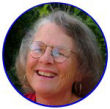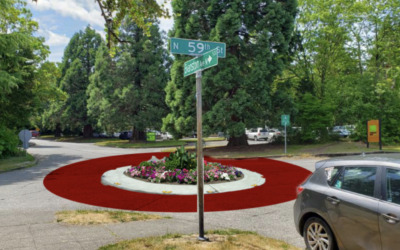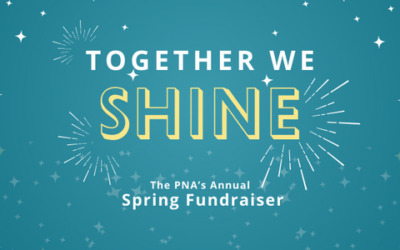By David Hirning
Editor’s Note: We will periodically offer in-depth stories from guest contributors. This article is by neighborhood freelance writer David Hirning.
 Cecile Andrews has been teaching, writing, and talking about how to live the “good life” since the late 1980s, when she first offered a workshop in voluntary simplicity at North Seattle Community College. A Phinney Ridge resident for more than three decades, Andrews has just released her third book, “Less Is More.” Santoro’s Books is holding a book release party for Andrews from 7-9 p.m. tomorrow (Thursday). Andrews discussed the book recently in the backyard of her Phinney home.
Cecile Andrews has been teaching, writing, and talking about how to live the “good life” since the late 1980s, when she first offered a workshop in voluntary simplicity at North Seattle Community College. A Phinney Ridge resident for more than three decades, Andrews has just released her third book, “Less Is More.” Santoro’s Books is holding a book release party for Andrews from 7-9 p.m. tomorrow (Thursday). Andrews discussed the book recently in the backyard of her Phinney home.
Q: When did the voluntary simplicity movement take off, and when did you come to it?
A: Well, the thing about voluntary simplicity is, it’s always been around. Duane Elgin wrote a book in 1981 called “Voluntary Simplicity.” I remember I bought it in Palo Alto and I got really excited about it. I would read it and re-read it…
Eventually I met someone else who read it, and they said, “You should offer a workshop.” Through my own program, community education [at NSCC], I offered one in 1989, and only four people showed up. So we cancelled it. I did it again in 1992, because this time I was involved in creating study circles. Study circles are something that comes to us from Sweden. I had seen an article about study circles, and I got so excited, and I wanted to have voluntary simplicity study circles. So in 1992 I offered the class again, and we got 175 people. The highest we’d gotten before that was 50 for boating safety – this was incredible.
Q: Did you offer the same thing as you did in 1989, or did you tweak it? Was it that you paired it with study circles?
A: That was part of it, that people saw this… Ronald Reagan was gone. Reaganism was over, and there was a rejection of his values. I think people saw the importance of coming together in community. And then our PR people at the school said, “This is a great story,” and got the Seattle Times to do an article, and they assigned a great reporter. And the article came out on the front page.
Q: Was it that you were offering study circles to create community, or were you saying that this is a new movement called “Voluntary simplicity?”
A: It was both. We were saying that we have such an individualistic society, and you can’t do it on your own. You need kindred spirits who know what you’re talking about. And you need the support, and you need the excitement of that small group. We put it on again the next quarter, and that time we got over 200 people.
Q: Was it neighborhood based? Just in North Seattle?
A: This wouldn’t have happened if it wouldn’t have been [in the zip code] 98103. It was the hand of destiny coming together – it wouldn’t have succeeded without this neighborhood. There was something about this neighborhood. Part of it is that Phinney has always been a different neighborhood. People live below their income. People are involved in neighborhood activities.
Q: I remember that I first heard about voluntary simplicity through the Phinney Neighborhood Association.
A: That was the follow-up. We started doing things at the PNA. I think all these things are important to this, because it really wouldn’t have happened [otherwise]. It’s funny, because somehow people see Seattle as the leader in the voluntary simplicity movement. And that means the world, because the idea of simplicity is only relevant to industrialized nations. It only appeals to people who have experienced affluence and found it wanting. And we are the people who have done that.
Q: Particularly the U.S.?
A: The U.S. and to some extent Great Britain. But nothing like the U.S., because nobody has the consumer society we do. This is bred out of a consumer society – it is a reaction to it. It was people thinking, This is not the right path. Both for environmental reasons, and for the well-being of people – the well-being of people and the planet.
We have a Microsoft culture here, because it’s a speed-up culture. And you could say Starbucks as well. It was funny that [my husband] Paul was writing a biography of Bill Gates at the time, and I was writing about voluntary simplicity – it looked like the odd couple, but it’s not. It’s one of the reactions to speed-up of the Microsoft culture, is voluntary simplicity.
Q: So coming out of that you thought, there’s something here that needs to be explored?
A: When you start getting involved in the simplicity movement, you meet a lot of people who have been doing it for a while. They may not even have had a name for it. I started meeting a lot of people who had done what we had done – the apartment in their house to reduce their housing costs, and people who had quit their fulltime job. You know, a fulltime job after a while gets to you, even if you like the job.
So, I decided that I would quit my administrative position at North Seattle Community College and just keep working on simplicity circles. That was in 1993.
Q: How did you come to write the book? [Andrews’s first book, “The Circle of Simplicity,” was published in 1997.]
A: One day I got a call from a Harper-Collins editor, asking if I wanted to write a book. We’d had really, really good press coverage – stories in the New York Times, the Los Angeles Times, and somebody had done a story in Esquire. I always thought it was so ironic, because on the cover [of that issue] was Bruce Willis. But the writer came out and attended some of my workshops with me, and we took long walks and talked about it, and it was this huge story. The editor read the story and called me. And I didn’t even know that you had to write a proposal. I knew nothing about how to write a book. And so I wrote “The Circle of Simplicity” [published in 1997].
Q: What exactly is a simplicity circle – what does it do?
A: Let me start with a short definition of voluntary simplicity. A lot of people think they know what simplicity is, they think, Oh, you’re cutting back, you’re not going to spend any more money. My favorite quote is when a young man said to me, “What is that thing you’re involved in, that ‘self-deprivation movement?’”
What I say to people is, Yes, it’s cutting back, but it’s more about what you replace it with. So the title of the new book is “Less Is More,” and so what I say is you must focus on the more. A lot of the writing about simplicity has focused on the less, but you start with the more, you know, what really does make you happy. So you cut back the consumerism, you can hopefully save money, be in less debt, less stress, maybe you can work less, but you have to do the more. That means you have to get involved in the things that matter.
The way I really think of voluntary simplicity is the “examined life.” Because you are asking, What matters? There are no “10 things you must do to simplify your life,” because the reason we have the consumer society, one reason, is because we’re manipulated by Madison Avenue. So the response to that is that you teach people to make conscious decisions. Simplicity is conscious decisions.
Q: Can you give me an example?
A: When we go to our simplicity circle now – I go to one every Monday night – we talk about the one thing you’ve done that week to simplify your life. So when it came to me I showed them my new iPhone. They were all like, “WHAT?? Cecile has an iPhone? Oh no!” So I wrote an article titled, “Can a simplicity advocate find happiness with an iPhone?” [laughs] And I love this iPhone, I absolutely love it!
Q: It doesn’t fit the image. People probably think of simplicity as, You don’t have a television, you don’t like technology.
A: Right. Basically what I’m saying is, I thought, did I want to spend the money on an iPhone? I evaluated it and I thought about it. And I decided, Yes, it was worth it to me. You think about … you ask yourself, you evaluate things in terms of the well-being of people and the planet. We obviously know that consuming a lot is bad for the planet. So you don’t make snap decisions –you don’t run out and buy something because you saw it on television.
But the other part of making conscious decisions is what you do with your time. When I was an administrator I had to be on a lot of boards, and they were very boring, but you did them because it would advance your career. But when I kind of gave up a career, in the way people think of it, I could get off all these boards and only do things that I wanted to do. I always describe myself as the hedonist of the simplicity movement, because I’m really, really guided very strongly by, is this something I want to do?
My big issue with the simplicity movement is that it has to start out with personal change, but it stayed in personal change for too long. When you think about personal change, there’s four levels: Personal, Community, Political, and Belief System. And you have to do them all. In the 1960s, people put down personal change; they looked at it as either/or, you’ve got to do the big change, and all you people are doing little things. But if you want big change, which you do, you have to have a movement, and the way you have a movement is you change people’s personal lives.
It has to begin in the personal. Nobody can talk about simplicity unless they have tried it. But it doesn’t go beyond that enough. And so with the Take Back Your Time movement, which John de Graff has led, the goal is to try to get policies to reduce our work hours. Whether it’s like they’ve done in France with the 35-hour workweek, or what they’ve done in most places with parental leave, or vacation leave. That’s what we’re working on right now – we have a vacation bill in Congress. The Take Back Your Time campaign came out of a bunch of us simplicity people nationally getting together and saying, How can we take this to the policy level? So we went from personal to policy.
However, there was still something left out – the community level. This is getting a lot of energy around the country. The relocalization, the revitalization of neighborhoods. It’s a rebirth. And we can’t do this unless we build community. For instance, think of the farmers markets. Part of the whole simplicity movement has to do with climate change. It is trying to get people to use less oil.
Every bit of our consumerism, everything we buy uses oil… either in the manufacture or the transport, or our working to get it, or whatever. So a big part of this is the reduction of oil. This is where community, the relocalization has come in. We’ve got to get people to shop local, buy local, eat local, live local. That is a big reduction in oil. But they are not going to do it unless they like their neighborhood, they love their neighborhood. Again, Phinney leads the way on this too. Well, not as much as Ballard.
Q: Kind of like Sustainable Ballard?
A: Yes, and we’ve had Phinney Eco-Village, but I’m changing it to Sustainable Phinney. Not only that, but we want to do it with Greenwood, so we’re calling it Sustainable Greenwood-Phinney. What we’re trying to do is to get people to come together.
This is why PhinneyWood, the blog, is so important. People are not going to shop local and not going to support their local neighborhood unless they see something fun about it. We want to bring back more street life. So when we have the art walk, that’s great. Anything we can do to get people hanging out on Phinney. And Santoro’s Books has been very central in creating street life. It’s a destination, and we’ve held lots of events there. It’s supportive of the community, it’s a place you love to drop in and talk to the people. It’s an old-fashioned bookstore. I always buy my new books there, because I think that’s important.
Q: Did you write another book before this one?
A: In 2006, I did “Slow Is Beautiful.” Essentially my three books are all really about the same thing. “Less Is More” actually describes all three of them the best. But the thing that people don’t realize is one of the reasons you cut back is because you want your time back.
And there’s the whole slow life movement. You know about slow food movement – here’s a movement that’s spread around the world. When you see something like that happen, those of us involved in social change have got to say, why did this spread? This is phenomenal. What they said was when you eat, you shouldn’t be eating with your food in one hand while you’re driving in the car. You should be sitting down with good friends, having good food, good conversation.
And then they said, at the same time, your food has to be grown well, it has to be organic, you have to pay attention to what it does to the soil. And then they linked it to social justice, you have to look at what the corporations are doing. So here was a movement that links all these issues, but the most important thing is that it started out with an image of the joyful community, these people coming together in a banquet, a celebration. And that is the image, the image of the joyful community, that to me is what we not only have to aim for, but what we have to use to bring about change. Because all the research on happiness says the most important element of happiness is your connection to other people. And that has sunk to the bottom of the list in our culture.
Q: How do you see it going nationally? Is it the kind of thing where it starts with a small group of people, and then it gets bigger, and then it gets bigger…?
A: Yes. That’s why the simplicity circle to me is essential as a method of change. Because you’re giving people the experience of community, you’re not just talking about it. You come together week after week and talk about how you are trying to live simply. Most of these people are not my individual friends, but I love coming together with them. We spend most of our time just laughing, we talk, we have good conversations, it’s almost magical. And that’s not only what we’re aiming for, it’s what we have to use to bring about any kind of change.
Q: So it’s not the end in and of itself – it radiates from there.
A: Right. And what we have in this country right now, with the ugliness that we’re seeing at the health care things… how can these people have become so hateful? It’s incredible. And so that kind of behavior just highlights how important this vision of the joyful community is.
A quote that I use is from [Antoine de] Saint-Exupery. [She paraphrases.] “If you want someone to build you a boat, you can’t just give them the wood and the plan for the boat and the tools. You have to teach them to yearn for the vast and endless sea.” Don’t you love that?
And when we give people an experience of community, when we talk about community, that’s giving them the vision of it. I think it’s that vision of the joyful community that will bring people together.




